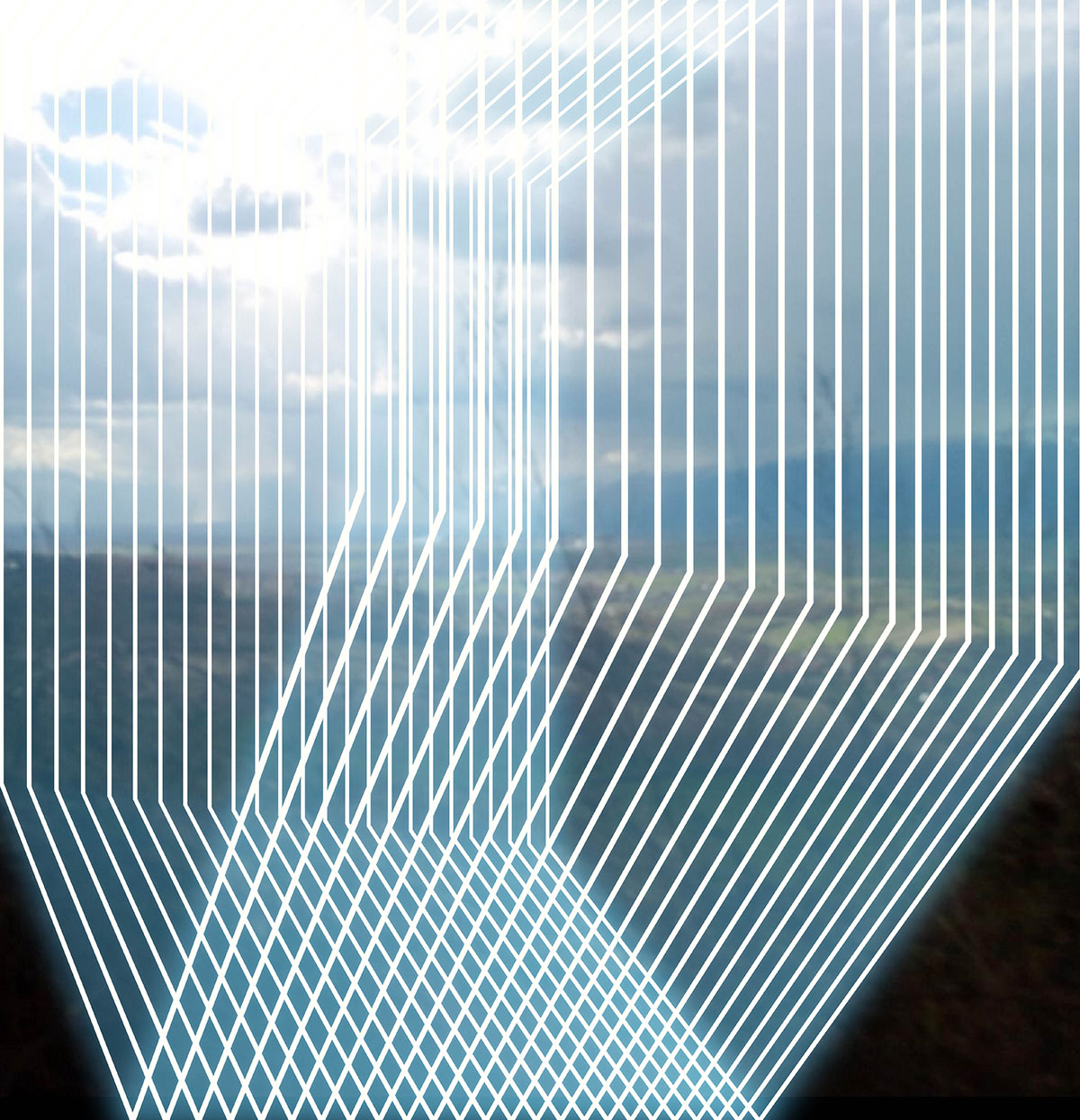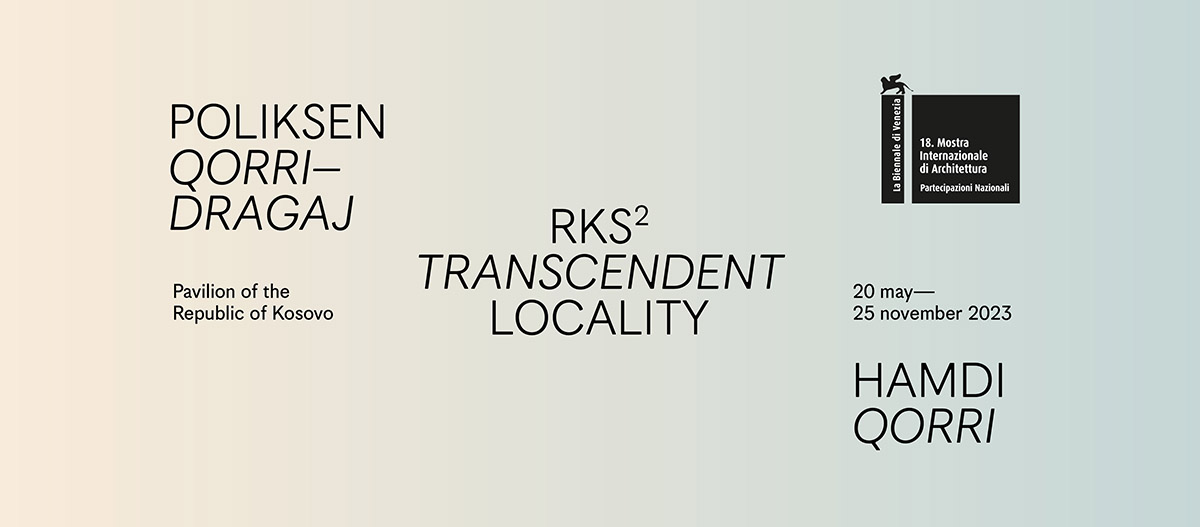Submitted by WA Contents
The Pavilion of the Republic of Kosovo will present rks2 | transcendent locality in Venice Biennale
Kosovo Architecture News - Mar 24, 2023 - 12:27 3591 views

The Pavilion of the Republic of Kosovo has announced the theme and details for its exhibition at the 18th International Architecture Exhibition of Venice Architecture Biennale.
The Venice Architecture Biennale 2023 will take place from Saturday 20 May to Sunday 26 November, 2023 at the Arsenale and Giardini venues in Italy.
Themed as rks2 | transcendent locality, the Pavilion of the Republic of Kosovo will explore different norms of migrations - from physical aspect, duration and emotional presence.
This year, the Republic of Kosovo is taking part for the fifth time in the International Architecture Exhibition in Venice Architecture Biennale.
Kosovo-based architects Poliksen Qorri-Dragaj and Hamdi Qorri are the exhibitors who will showcase works, unfolding the concept of translocality, which is descibed as "a model of life that is becoming more and more prevalent."

Transcendent landscapes
The exhibition is commissioned by Dafina Morina, a senior conservator working for the National Museum of Kosovo since 2007.
The team stated that "up to the present day, migration plays a significant role in the social development of Kosovo. It manifests itself in different forms, which differ in motives, manner, and duration."
"The exhibition deals with a special form of migration, which illustrates that the migratory process is not completed with the simple move to another country."
Migration in nature "often takes place in different phases, some of which end in a return to the home country," according to team.
While this return can be temporary, seasonal, or permanent, what they all have in common is that they ensure that connections and networks of different kinds are created between the homeland and the hostland.
People living in multiple places at the same time, maintaining connections between Hostland and Homeland through communication, transfer of knowledge, information, material and immaterial goods.
In the course of the tense political situation and an ever-worsening marginalization of the Albanian population during the breakdown of the Yugoslavian Republic, hundreds of thousands of people sought refuge and protection abroad. In some cases, this flight would often last for decades without return.
During this conflict- and war-related migration wave in the late 1980s to the late 1990s, people fleeing found temporary arrival mostly in OECD countries, regulated in the form of a residence permit as politically persecuted persons.
This legal status did not provide for a return to the homeland as long as the reason for flight had not been resolved and lifted. For many refugees, this represented a state of waiting and lingering, because the reason for migration was not a self-determined one, it was imposed from the outside.
The perceived locality of this migration group is the starting point for a spatial-philosophical narrative: transcendent locality. The concept of transcendence is variously described and defined from ancient to contemporary philosophy. Common to all meanings is that transcendence implies the process of crossing a boundary that separates two fundamentally different spheres.
For the individuals living in migration, the circumstance of not being able to return to their homeland for an indefinite period represented a deep caesura in their lives. On the one hand the migrated individuals were physically present in the Hostlands. superficially managing their everyday life and functioning in their new environment.
But on the other hand, the emotional presence, was a different aspect: due to the conflict, attention and thoughts revolved around the abandoned homeland, fears and insecurities often did not allow the individuals to arrive at the hostland. They were located in an intermediate state between the physical now and the abandoned before. In this state boundaries between the immanent being in the now and the transcendent being in the mind blur - the migrated individual is in a transcendent locality.

Transcendent people
The project explores the impact of transcendent locality on immanent space in the short and long term: how the return of migrants after the war has affected Kosovar cities and how the social migration networks, which developed in the hostlands, impact on urban space in the form of translocal urbanism.
As the team emphasized, the The Pavilion of the Republic of Kosovo opens for discussion how urban planning can respond to these specific conditions in order to create urban resilience and liveable cities.
The Pavilion of the Republic of Kosovo can be visited in Arsenale venue, which is organized by The Ministry of Culture, Youth and Sports of the Republic of Kosovo.

Several pavilions announced their themes and details for the 2023 Venice Architecture Biennale, such as Gabriela De Matos and Paulo Tavares were announced as the curators of the Brazilian Pavilion, the Danish Pavilion will explore Coastal Imaginaries curated by Josephine Michau.
Moreover, the Georgian Pavilion will explore January, February, March, focusing on the relationship between the flow of time and energy, the Swiss Pavilion will present Neighbours at this year's exhibition.
More recently, the Korean Pavilion announced its theme, 2086: Together How?, the Austrian Pavilion presented its theme PARTECIPAZIONE / BETEILIGUNG at the Venice Architecture Biennale, and the Estonian Pavilion anounced its theme Home Stage, which will explore the changing conflicting paradigms between homes and real estate.
Top image: Transcendent places. Image courtesy of Pavilion of the Republic of Kosovo.
All images courtesy of Pavilion of the Republic of Kosovo.
